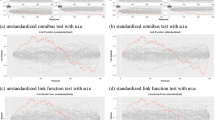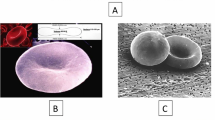Abstract
Motivated by the problem of organ allocation, we develop a queueing model with reneging that provides a stylistic representation of the transplant waiting list. The model assumes that there are several classes of patients, several classes of organs, and patient reneging due to death. We focus on randomized organ allocation policies and develop closed-form asymptotic expressions for the stationary waiting time, stationary waiting time until transplantation, and fraction of patients who receive transplantation for each patient class. Analysis of these expressions identifies the main factors that underlie the performance of the transplant waiting list and demonstrates that queueing models can prove useful when evaluating the organ allocation system.
Similar content being viewed by others
References
C.J. Ancker and A.V. Gafarian, Some queueing problems with balking and reneging I, Oper. Res. 11 (1963) 88–100.
C.J. Ancker and A.V. Gafarian, Some queueing problems with balking and reneging II, Oper. Res. 11 (1963) 928–937.
G. Arfken, Mathematical Methods for Physicists (Academic Press, New York, 1985).
G.F. Carrier, M. Krook and C.E. Pearson, Functions of Complex Variables (Hod Books, New York, 1983).
E.G. Coffman, A.A. Puhalskii, M.I. Reiman and P.E.Wrigth, Processor-shared buffers with reneging, Performance Evaluation 19 (1994) 25–46.
E. Gelenbe, Product form queueing networks with negative and positive customers, J. Appl. Probab. 28 (1991) 656–663.
B.V. Gnedenko, and I.N. Kovalenko, Introduction to Queueing Theory (Israel Program for Scientific Translation, Israel, 1968).
E.H. Kaplan, Tenant assignment models, Oper. Res. 34 (1986) 832–408.
L. Kleinrock, Queueing Systems, Vol. 1: Theory (Wiley, New York, 1975).
S. Nahmias, Perishable inventory theory: A review, Oper. Res. 30 (1982) 680–708.
F.P. Sanfilippo, W.K. Vaughn, T.G. Peters, C.F. Shield, III, P.L. Adams et al., Factors affecting the waiting time of cadaveric kidney transplant candidates in the United States, J. Amer. Medical Assoc. 1267 (1992) 247–252.
R.E. Stanford, Reneging phenomena in single channel queues, Math. Oper. Res. 4 (1979) 162–178.
R.A. Wolfe, V.B. Ashby, E.L. Milford, A.O. Ojo, R.E. Ettenger, L.Y.C. Agodoa, P.J. Held and F.K. Port, Patient survival for wait-listed versus cadaveric renal transplant patients in the United States, J. Amer. Soc. Nephrology 8 (1997) 708A.
S.A. Zenios, G.M. Chertow and L.M. Wein, Dynamic allocation of kidneys to candidates on the transplant waiting list, Oper. Res. (1999), to appear.
S.A. Zenios, L.M. Wein and G.M. Chertow, Evidence-based organ allocation, Amer. J. Medicine (1999), to appear.
Author information
Authors and Affiliations
Rights and permissions
About this article
Cite this article
Zenios, S.A. Modeling the transplant waiting list: A queueing model with reneging. Queueing Systems 31, 239–251 (1999). https://doi.org/10.1023/A:1019162331525
Issue Date:
DOI: https://doi.org/10.1023/A:1019162331525




